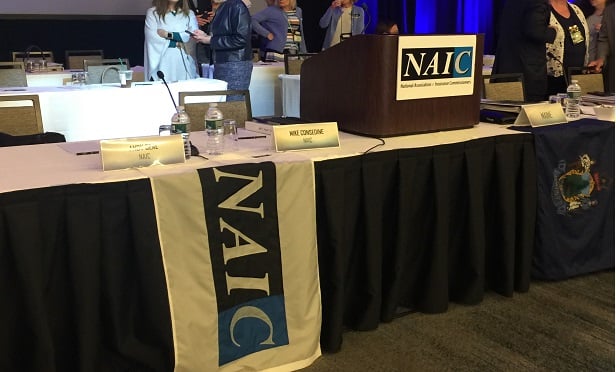A team that helps U.S. regulators look for cracks in the financial system has come out with its latest look at what could break next.
Analysts at the Office of Financial Research (OFR) have told Congress, in a new Financial Stability Assessment report, that the financial system as a whole looks pretty stable, and that capital levels at U.S. insurance companies appear to be strong.
(Related: Forecasters Wonder About Scratchy Credit Market Throat)
U.S. life insurers have invested heavily in “collateralized loan obligations” (CLOs), or instruments backed by pools of loans, which sound as if they might be similar to the “collateralized debt obligations” (CDOs) that were often blamed for bringing on the 2007-2009 Great Recession.
CLOs are better than CDOs, the analysts argue, because the CLO issuers give more information about the loans backing the products, and the issuers have more tools they can use to manage risk.
Insurers Themselves
The insurance section in the new report is shorter and more general than the insurance section released a year ago. Last year, for example, the OFR analysts included a section showing how new tax rules had affected insurers’ risk-based capital (RBC) ratios. RBC ratios give regulators a rough idea of how an insurer’s financial resources compare with the benefits it has promised to provide.
The OFR analysts do say that continued low interest rates are causing problems for insurers.
“In a low interest-rate environment, firms may put a greater share of their portfolios in higher-yielding and riskier investment,” the OFR analysts write. “This change in asset allocation can increase the risk that resides in these companies and, hence, their risk of disruption or distress.”
One challenge is that individual insurance companies have RBC ratios, but corporate groups that include insurance companies do not have group RBC ratios, the analysts write.
The analysts note that the National Association of Insurance Commissioners is testing a tool for assessessing insurance group capital levels.
The Glossary
Some OFR stability reports include glossaries that define terms of interest to financial system risk watchers.
The OFR is an arm of the U.S. Treasury Department. The Treasury secretary chairs the Financial Stability Oversight Council (FSOC). FSOC is supposed to coordinate the efforts federal and state financial services regulators to protect the U.S. financial system. The OFR reports help FSOC and members of Congress understand problems that could, potentially, bring everything crashing down.
The OFR report glossaries may give some clues about what’s on the minds of OFR analysts and OFR report users.
In 2013, for example, OFR analysts defined “captive insurer” and “International Association of Insurance Supervisors” in a glossary, but not the “National Association of Insurance Commissioners.”
The OFR analysts added the NAIC to their glossary in 2015.
The analysts added more insurance-related terms in 2016. The insurance terms in the latest glossary appear to be similar to the terms in the 2016 glossary.
For a look at 7 insurance and insurance-related terms in the OFR analysts’ latest glossary, see the idea cards in the slideshow above. Wiggle your pointer over the first slide to make the control arrows show up.
Resources
Links to copies of Office of Financial Research financial stability reports are available here.
— Read Stability Council Keeps Right to Cry, ‘That Insurer Is Drowning!’, on ThinkAdvisor.
— Connect with ThinkAdvisor Life/Health on Facebook, LinkedIn and Twitter.







 December 12, 2019 at 03:01 PM
December 12, 2019 at 03:01 PM




















 Slideshow
Slideshow





